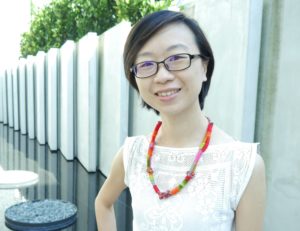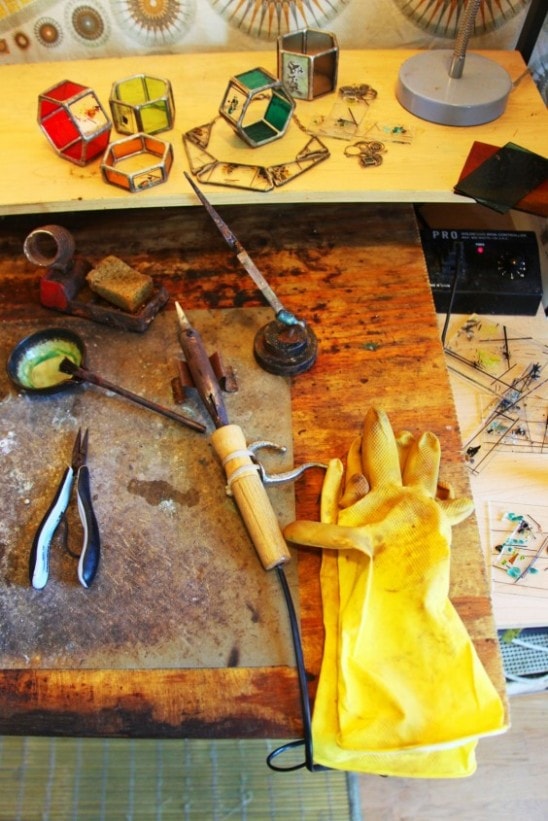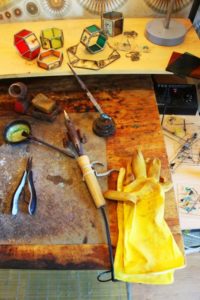We were curious about the market for handmade and fair trade products in what is known as the “shoppers paradise” – Singapore. Is there an appetite for ‘purchasing with a purpose’ in a city state that relies heavily on imported products? Blogger Agy at Green Issues by Agy provides us with some great insights here.
Dinosaurs and Singapore’s First Lady, Ms Ho Ching, caused quite a stir in the media last year. During an official visit to the USA in August, Ms. Ho was spotted carrying a dark blue pouch with dinosaur silhouettes as she accompanied her husband, Prime Minister Lee Hsien Loong to the White House. What got tongues wagging was that she had chosen locally designed and handmade over designer and mass produced. Although initially criticised by netizens for her choice, the public warmed up to the First Lady’s decision, and the item sold out not least because it was designed by an autistic student of Pathlight School.
Local and handmade products have come a long way in Singapore. Being a city with few natural resources, the majority (if not all) of our goods are imported, with branded and designer items held in higher regard. And with Singapore being known as a shopper’s paradise (over 150 malls and counting), it has become all too easy for consumers to purchase goods sold under the fast fashion business model. Ten years ago, handmade products had limited opportunity, while locally made struggled to maintain visibility in an increasingly crowded retail market. Although overseas online platforms such as Etsy were available, they did little to increase the exposure of both local and handmade to the Singaporean market.
The Start of the Handmade Movement
However, this changed in 2012 when Michelle Tan and Aisah Dalduri set up the Handmade Movement. It was Singapore’s first large-scale and non-profit indie craft fair, where over 70 local artisans came together to share their art. Non-crafters came to learn more about the handmade community and even tried their hands at making things. It was encouraging to see how the community rallied around to support the initiative, not just in terms of hands and feet, but monetarily as well. Although the fair no longer exists, the platform fuelled a curiosity in local and handmade products. It was also no coincidence that the maker movement had also started to grow in Singapore.
The Maker Movement
The Maker Movement began in the US in 2005, and in essence means people who are involved in the act of being a “maker” or “DIYer” be it tech-related or with traditional techniques such as weaving, sewing, woodwork or even knitting. Platforms such as the annual Maker Faire Singapore, Singapore Makers, Handmade Singapore and a growing number of makerspaces are supporting a thriving community who want to make making more than just a hobby. However, many are still apprehensive about making it their full-time profession particularly when it boils down to financial sustainability and concerns over how much the public are willing to pay for handcrafted and local products.
Growing Public Support
The demand for such goods appears to be growing with a boom in pop-ups and public handmade/ craft fairs in recent years. One of the first markets to focus on original creations by local artists, designers and crafters is MAAD, or Market of Artists and Designers. Others such as Keepers, Naiise, Public Garden and Togaetherly followed to provide independent local businesses an opportunity to share their creations with the public, while Pop and Talent Hub (or PaTH), a social enterprise run by Social Innovation Park, even provides business mentorship to potential indie designers. Examples of locally designed and handmade businesses include It Takes Balls, Momshoo, Taikensonzai and Mai Textile Studio.
But one of the key factors that spurred the public’s affection with local design was Singapore’s Jubilee year in 2015 to mark our 50 years of independence. The celebrations brought out the nostalgia, and many local artists and designers created goods that took the public down memory lane. These ranged from traditional food inspired cushions to bags featuring old-school treats.
Employing the Marginalised
Many local businesses also employ disadvantaged individuals to design and even make the products. For example, The Pathlight School, where Ms. Ho’s pouch was bought, provides a platform through their Artist Development Programme to promote the special talents of people with autism and related challenges. Others such as the FunkyFairtrade provide income and sewing classes to women migrant workers in shelters through the sales of their handmade buntings, while social enterprise, The LOOMs Workshop is a social enterprise that provides education and employment for women through conducting art, craft and drama workshops as well as the creation and sale of handcrafted lifestyle products, fashion accessories and homeware.
Can More Be Done?
But with all the fairs and pop-ups, a friend recently lamented how she felt local and handmade items are still marginalised in Singapore’s retail scene. She was selling her handmade items at a well known shopping mall in Orchard Road. A potential customer commented how beautiful the items were, and enquired whether they were made in Japan. However, upon hearing that the goods were designed and made in Singapore, the customer slighted the friend and disappeared. This may have been a one off event, but it does highlight the challenges and public perceptions local artisans and designers face. What can help capture the public’s attention towards local and handmade? Perhaps another “Ho Ching Effect” is needed but the continued coming together of like-minded creatives at platforms that promote such wares needs to be sustained to increase their visibility and hopefully become mainstream.



